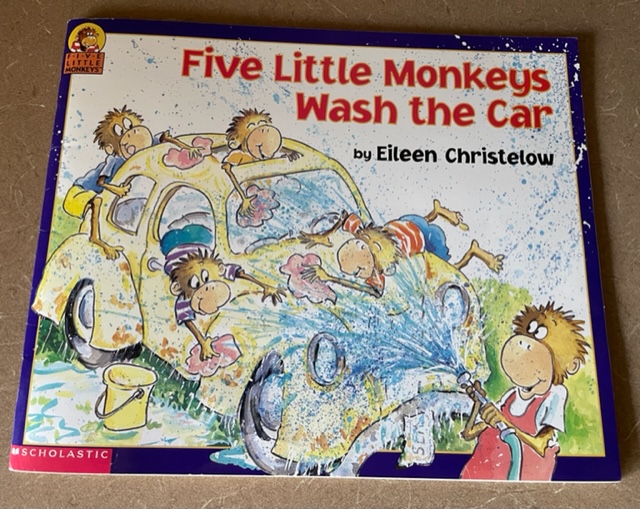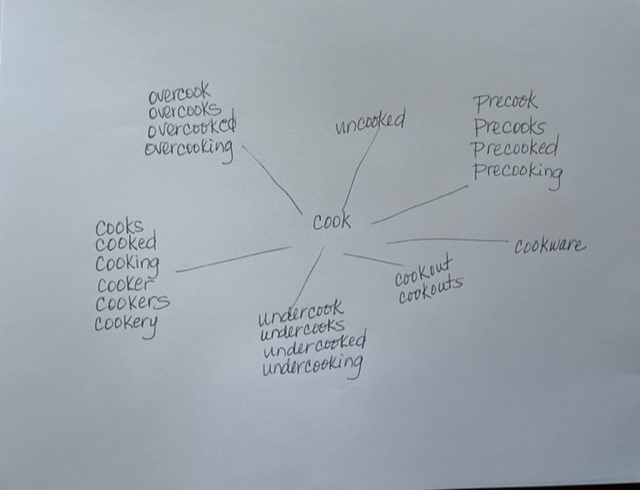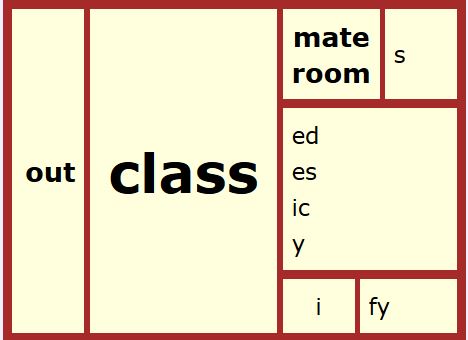Six Easy Ways to Practice Spelling
(This post contains affiliate links. Read my full disclosure.)
Would you like some easy and not boring ways to practice spelling? Back when I was working with my daughter, I wish I had used more activities or games to practice spelling. I didn’t know how to do this. I was worried about wasting time.
She felt spelling was b-o-r-i-n-g, BORING! I didn’t have many ways to practice spelling words we were working on.
And spelling consistently was a challenge for her. We reviewed. Take spelling with <C> or <k>. Which is right to spell /k/ in this word? Ummm… No question, I regret not having more engaging and effective ways to practice spelling.
[I use angle brackets < > to distinguish the letters, also known as graphemes, from the symbols in slanted brackets / / that indicate the phonemes, or voiced sounds.]
My daughter, your kids, my students all want to be better spellers. We all want it to be easier for them. Spelling takes some thinking.
Let’s dig into how to get our students thinking about spelling and keep their attention. We’ll apply these activities to studying <c> and its phonemes.
<C> can spell four phonemes (voiced sounds). You teach students that <c> can represent /k/. They quickly learn that the letter <k> also spells /k/. At some point, they’ll find that there are two other sounds that <c> can spell.
Like I said, spelling takes some thinking.
Spelling with < C >
My daughter and lots of other students struggle with spelling because there isn’t just one phoneme with only one grapheme to represent it. The phoneme /k/ can be spelled with <c>, <k>, <ck>, <ch>, <que>, and <kh>. And like I said, <c> doesn’t only spell /k/.
Think about the way we pronounce the <c> in each of these words:
- custom
- city
- special
- cello
Practice Spelling in a Variety of Ways
You want fresh ideas to effectively practice spelling, because kids get bored with the same thing, even though their spelling words change. We all enjoy something different to keep it interesting.
If you’d like some ready-to-go activities to print and use here you are. Try some of these as you work on spelling. My title is Six Easy Ways… but I added a couple extra in this post. Bonus, for you!
Letter Hunts and Sound Hunts
You’ve heard of word searches where you have a page of letters and students search for specific words and circle them. Those are fine activities. But that’s not what I’m sharing.

Here’s how you might do a letter hunt. Suppose you’re reading a book like Five Little Monkeys Wash the Car by Eileen Christelow with your student. Before reading the story you ask him or her to help you find words with an <c>. You or your student would write: can, car, comes, terrific, voice, crocodiles, calls, climb, fancy, convertible. You can discuss the phonemes in those words–some have /k/ and some have /s/. In the words with <c> spelling /s/, what letter comes after the <c>? In the words with <c> spelling /k/, what letter comes after each <c>?
Or you could do the same thing with this book looking for words with a /k/ sound. You and your student could write down: monkey, can, rickety, wreck, car, makes, etc. These could also be sorted for their graphemes spelling /k/: <c>, <k>, and <ck>. Using these free download hunt pages to record your word finds.
What’s the benefit? They are engaged in looking, noticing, and thinking. Then they’re writing them down.
Student Teaches
Let the student know you’ll ask him/her to explain the concept you’re going to discuss after you’ve worked with it for a bit. Hopefully that gets their focus on you. Keep your teaching brief, simple, and crystal clear. Then ask the student to explain to you or to another student the spelling rule, etc.
This will give you good feedback on well the teaching went. Maybe they need more examples. Maybe they need more repetitions of the concept explanation. “We can spell /k/ with a <c> unless it’s followed by an <e>, <i>, or <y>.” Some dyslexic students could easily repeat that back. Others need some support and time.
What’s the benefit? You retain so much more when you teach it to someone else.
Word Web
A word web can be created in graphic organizers or simply a blank page with one word in the middle. Turning the paper to a landscape orientation rather than portrait allows for more writing room.

Matrix
A matrix is another visual showing the morphology and structure of a word family. Students practice the spelling while adding suffixes and/or prefixes to the base element using word sums. Some word families will also have compound words. They see many words while you’re working with the base.

Word Sort
Another multi-sensory activity students enjoy is sorting words into concept categories. This is a great way to introduce students to a concept as they notice the differences in spelling or pronunciation of a grapheme.
Practice with Suffixes
Adding suffixes to a base is another way to practice spelling. The word web and the matrix both use this. But you can practice with any word or several words that have the concept spelling.
Suppose your student adds an <-ing> suffix to call. Then, you ask them to use that word in a sentence. They could just tell you or they could write it.
Spelling Bingo
You may find spelling bingo to be a favorite way to apply a spelling concept. The bingo board is created with each cell containing the concept spelling. For example, if they are learning to choose between <c> and <k> for a beginning /k/ in the word, the bingo board will have either <c> or <k> on the far left of each cell. This is so the players can write the spelling into the cell using the <c> or <k> that’s already there.
Players take turns reading each word card and the other player spells it on their board. Just like regular bingo, you can stop at 4 in a row or once the whole board is filled with words.
As they are spelling, ask them to explain why spelling with <k> or a <c> is correct.
Correct the Spelling
This activity provides real-world practice in checking their spelling. They edit some phrases or sentences you prepare. Use this after you’ve taught students about a spelling concept, and they’ve had some experiences working with it, like some of the above ideas.
Create a few sentences for a quick review. Purposefully, misspell 1-2 words in each sentence. The misspelling should require the student to apply the concept you’re working on. But you might throw in a misspelling from a previously taught concept to see how well they are applying that spelling pattern. I’ve found it’s helpful to let them know how many errors they need to find.
Be sure not to misspell every instance of the concept spelling. Some correct. Some incorrect. You want them to think.
Ask them to explain why a word is or isn’t correctly spelled. For spelling /k/ with a <c> or a <k>, an explanation could be the “Spell /k/ with a <c>…” above. Hopefully, they can also phrase it in their own words, responding “because it doesn’t have an <e>, <i>, or <y> right after it.”
It changes passive learning into active learning. In this way, they are continuing to teach and making their own understanding solid.
Try some of these ideas for spelling practice. Give your students multiple ways to apply what they’re learning about spelling. Repetition in a variety of spelling tasks gives them the experiences they need to make it memorable.

